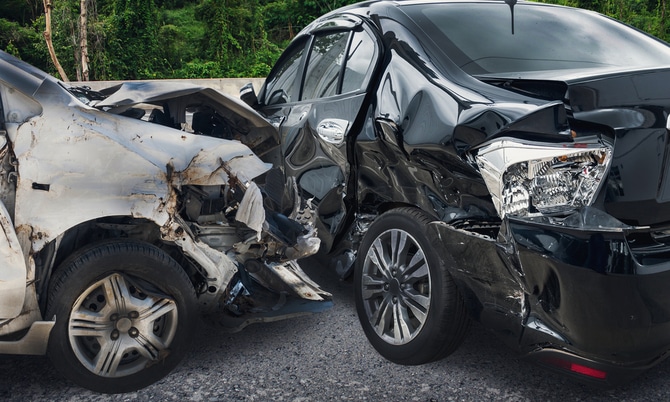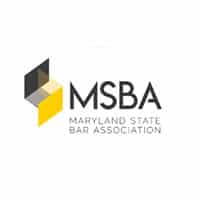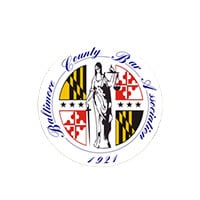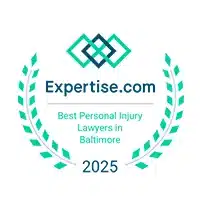Determining Liability in T-bone Accidents in Maryland

T-bone accidents often look simple at first glance, but figuring out who’s legally responsible isn’t always easy. In Maryland, proving fault is critical—especially because the state follows a strict contributory negligence rule. If you’re even slightly to blame, you could be barred from recovering any damages at all.
To sort out liability, investigators usually start with the basics: the crash report, witness statements, and physical evidence from the scene. In some cases, traffic camera footage or nearby surveillance video can help piece together what really happened. That kind of evidence might show one driver running a red light or ignoring a stop sign while the other had the right of way.
It’s not just about showing who caused the crash—it’s also about proving you didn’t. That distinction can make or break your claim under Maryland law.
How T-Bone Accidents Happen
T-bone crashes often happen in intersections where two roads meet and drivers are expected to yield, stop, or follow traffic signals. One of the most common scenarios is a driver making a left turn without waiting for a safe gap in traffic. If the oncoming vehicle has the right of way, a collision is almost unavoidable.
Another frequent cause is someone turning right on red without checking for cross-traffic. When one driver assumes it’s clear and the other is already moving through on a green light, side-impact crashes happen fast—and often hard.
Four-Way Stops Can Be Confusing
Not everyone understands who goes first at a four-way stop. Some roll through without coming to a full stop, while others assume they have the right of way when they don’t. These mistakes are especially dangerous when two cars arrive at the same time and one driver fails to yield to the vehicle on their right.
On the other hand, being overly cautious can also lead to crashes if other drivers aren’t sure what you’re doing. These mix-ups often cause confusion—and serious T-bone collisions.
Parking Lots and Driveways Pose Risk, Too
Not all T-bone crashes happen on major roads. These crashes don’t just happen in intersections. You’ll see them in parking lots too. Or when someone’s pulling out of a driveway. Maybe they didn’t see the other car coming, or they thought they had more time than they did. Either way, the result can be the same—one car slamming into the side of another.
Maryland’s Roads Add To The Challenge
In parts of Maryland, the roads don’t help. Curves, hills, trees—these all make it harder to spot oncoming traffic. A driver turns, thinking the way is clear, and it’s not. That’s how these accidents happen.
When they do, it’s not always obvious who’s to blame. It takes a careful look at what happened, who had the right of way, and whether someone acted carelessly or too fast for the conditions.
Proving Liability in a Maryland T-Bone Accident
T-bone crashes can be serious, and figuring out who’s responsible isn’t always simple. Even when one driver slams into the side of another, it doesn’t automatically mean they’re at fault. To determine liability, investigators need to look at the full picture.
Questions That Help Determine Fault
Investigators will ask key questions, including:
- Who had the right of way at the time of the crash?
- Did either driver ignore a red light or stop sign?
- Was someone speeding, distracted, or under the influence?
- Did poor road conditions play a role?
- Were the traffic lights malfunctioning?
- Could one of the drivers have avoided the crash?
Each of these questions helps build a clearer picture of what happened in those final moments before the impact.
What Counts as Evidence?
Proving who’s at fault in a car accident takes more than just saying what happened. You need solid evidence to back up your version of events. Here’s what that might include:
Skid Marks
Skid marks can show whether a driver tried to brake before the crash and where they started to lose control. They help establish speed, reaction time, and direction of travel right before impact.
Traffic Camera Footage
If available, footage from red-light cameras or traffic surveillance can be key. It may clearly show one driver running a light or turning when it wasn’t safe.
Witness Statements
Independent witnesses can confirm whether someone ran a stop sign, failed to yield, or was speeding. These statements carry weight, especially if the witnesses are unbiased and not involved in the crash.
Police Report
Officers at the scene usually note their observations, diagram the scene, and document whether any citations were issued. While not always conclusive, a police report can support your version of events.
Black Box Data
Many modern vehicles record speed, braking, and steering input. This onboard data can help show whether a driver tried to avoid the crash or was traveling too fast.
Accident Reconstruction Experts
In more complex or serious cases, experts may be brought in to analyze the crash. They use math and science to figure out how fast the cars were going, how they moved, and what likely caused the impact.
Shared Fault Claims in Maryland
Sometimes both drivers play a role in causing a crash. But in Maryland, even a small mistake on your part can keep you from collecting anything.
Maryland’s All-or-Nothing Fault Rule
As we mentioned, Maryland follows what’s called a contributory negligence rule. It’s strict—if you’re found even slightly at fault, your claim can be denied entirely. Unlike other states where fault is divided and compensation adjusted, Maryland doesn’t allow partial recovery. This rule gives insurance companies a strong incentive to blame you, even in small ways, to avoid paying.
How Right-of-Way Mistakes Can Lead to Shared Fault
Certain driving mistakes are more likely to create shared fault situations. One of the most common involves right-of-way violations. Maryland law is clear:
- At four-way stops, if two cars arrive at the same time, the one on the left must yield to the one on the right.
- At stop signs, drivers must yield to anyone already in the intersection.
- When turning left, you have to wait until oncoming traffic clears before making your move.
If you violated one of these rules, even briefly, the other side might use that to argue you were partially at fault.
Why These Cases Are So Hard to Win Without Help
Insurance companies look for any detail they can use to pin fault on you. That might include something like going forward too early at a stop sign or failing to slow down at an uncontrolled intersection.
Proving that you followed the law and weren’t responsible in any way takes strong evidence and a detailed understanding of how Maryland’s traffic rules apply to your case.
Vehicle Damage and Determining Fault
In many car accidents, especially side-impact crashes, the location and pattern of vehicle damage can help tell the story of what happened. In Maryland, where even minor fault can block your right to compensation, this kind of physical evidence can be crucial.
What the Damage Can Show
T-bone accidents typically happen when a driver fails to yield, often at a stop sign or red light. If one car is struck directly on its side and the other vehicle had a stop sign, investigators are likely to determine that the driver who had the stop sign was at fault for not yielding the right of way.
T-bone accidents are especially clear-cut when the impact occurs toward the center of the struck vehicle rather than the front. This often indicates that the struck car was already well into the intersection when the collision happened, suggesting the other driver entered the intersection improperly and is likely at fault.
Driveway and Parking Lot Collisions
Damage location also matters in low-speed crashes, like when someone pulls out of a driveway. If your passenger side—especially the middle of the vehicle—is impacted, it’s a sign you were in the roadway when the other driver entered without checking. This kind of damage often supports a claim that the other driver caused the crash.
Left Turn Crashes and Damage Clues
The location of damage in a left-turn accident can often help determine fault.
If a vehicle going straight collides with the left-turning vehicle while attempting to avoid it, damage might appear on the front or right side of the straight-moving car. This usually indicates that the driver of the turning vehicle is at fault for failing to yield the right of way.
If the turning vehicle is struck near its front right corner, this typically suggests a poorly timed turn, making the turning driver responsible. However, if the impact occurs farther back, such as on the right rear corner of the turning vehicle, it may indicate that the turn was nearly complete and the driver of the straight-moving vehicle did not react in time, which could shift liability to the straight-moving driver.
Small differences in damage location can significantly influence fault, highlighting the importance of documenting all collision details.
Consult With Baltimore Auto Accident Attorney John Leppler Today
If you’ve been injured in a crash, John Leppler is the kind of attorney who gives you his full attention—not just during the first call, but throughout your entire case. At Leppler Injury Law, John personally handles every claim.
You won’t get shuffled around or left wondering what’s going on with your case. He keeps you informed, answers your questions directly, and fights to get you the compensation you deserve. If you need help after an accident, contact Leppler Injury Law for a free consultation today.







